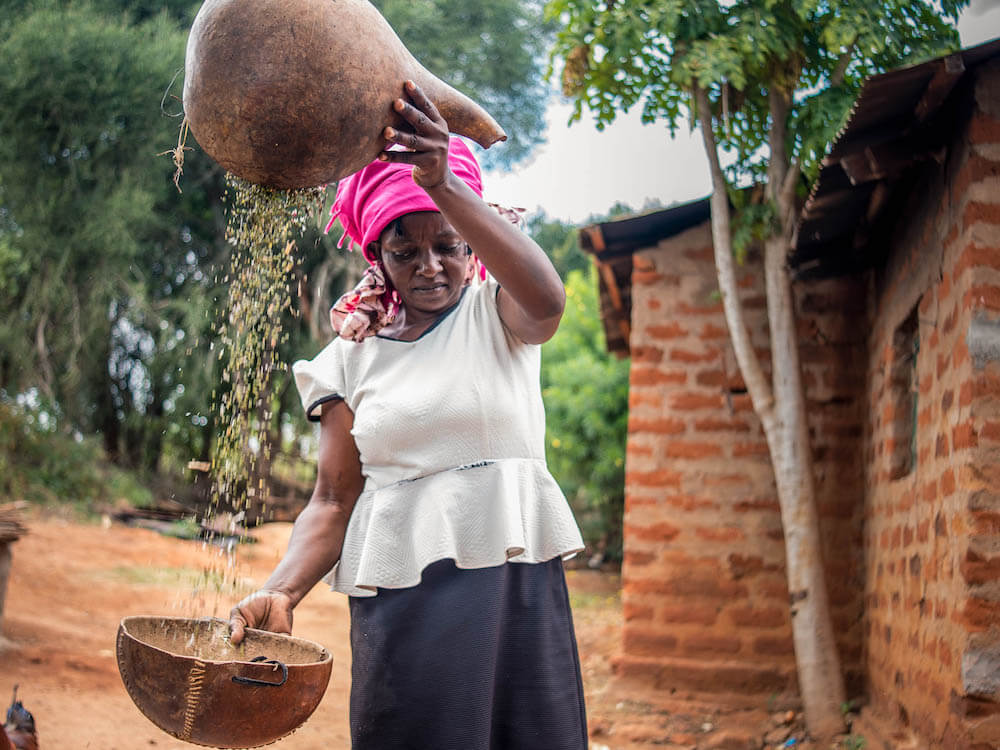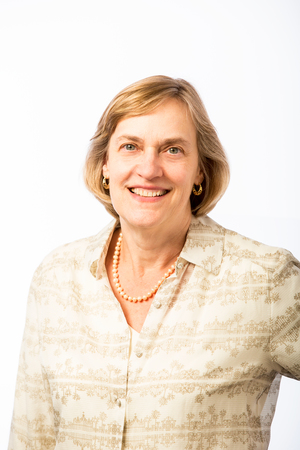
When I reflect on the future of financial inclusion, I find myself returning over and over to a basic question. What is the purpose of financial inclusion? Why are so many people around the world working towards it, and why do they believe that financial inclusion will contribute to a better world? What purpose have I been pursuing as leader of the Center for Financial Inclusion for the past decade?
This year, in choosing a theme for our 5th annual Financial Inclusion Week, CFI reflected this question attitude by selecting Financial Inclusion for What? as the theme. But we are not about to let that important question go unanswered. So, after posing it, the CFI staff came up with four answers that will be explored during Financial Inclusion Week: financial inclusion for financial health, financial inclusion for equity, financial inclusion for sustainable development, and financial inclusion for the bottom line.
While each of these ideas is important and worthy of exploration, I’d like to talk here about just one of them: sustainable development. In my view, the time is right for the financial inclusion sector to focus smartly on this set of goals. Even more emphatically, if the financial inclusion sector does not embrace sustainable development, it will soon find that it has worked itself out of a job. That’s because the more basic financial inclusion challenges are well on their way to being solved.
In the last decade an amazing transformation has taken place in the ability of most people to move money around quickly and efficiently. Millions and millions have opened bank or mobile money accounts and gained the ability to receive income straight into an account and then use electronic means to buy things. Yes, there are gender gaps, poor country gaps and rural areas gaps. But these are rapidly closing.
When we can presume that basic financial infrastructure is available to everyone for routine payments and banking, the financial inclusion job will be done. Right? This is an accomplishment that everyone in the financial inclusion sector can be very proud of. Even if we are not quite there in 2019, the finish line is well in view. Put an enormous celebration emoji right here, and look for the next challenge.
With financial access infrastructure as a foundation, we can turn to assisting people to do what they care most about: to apply financial services toward problems in the real sector – the real world, where people earn a living, get educated, build a home, go to the doctor and much more. The Sustainable Development Goals offer a widely-accepted list of real sector challenges that financial services can help address, but I’d like to focus on a slightly narrower list that highlights the activities where financial services are critical: agriculture, small business, health, education, shelter, and environment. The financial inclusion world needs to begin developing solutions that contribute directly to these sectors.
Back in the 1970s, the World Bank, USAID and other global development organizations were highly real-sector oriented when they talked about financial services. They provided enormous lines of credit to agriculture, fisheries, small business, and the like. These lines of credit were channeled through government development banks, who pushed them out at subsidized interest rates. Because they were seen as cheap handouts from the government, they were diverted to elites, with dismal repayment records. The development banks required constant cash infusions, either from abroad or from government budgets. And meanwhile, regular banks could not develop profitable businesses in these sectors, being out-competed by the subsidized loans. Development organizations treated banks much like communist countries treated them: as the distribution arms of central planning. Their solvency wasn’t important – they were just an administrative function. This was a disaster – for the banks, for the low-income people who were intended beneficiaries, for the market economy and for the achievement of development objectives.
Fortunately, a band of rural finance enthusiasts at Ohio State University (and others with similar views) convinced the World Bank and USAID to turn off the money hydrants. How they did that is a saga unto itself. For our story, the important thing is that once the subsidized credit spigot was turned off, it left open space in the financial sector for the growth, first, of microfinance and then of financial inclusion. Starting in the 1980s, these movements focused their attention in the right place: building sound financial institutions that knew how to serve the poor and excluded. That institution- and model-building focus was exactly what was needed at the time, and, with a boost from technology innovation, the sector has been on an unbroken path for three decades that is taking us to full realization of basic financial inclusion goals.
But this focus has also meant a three-decade detour away from deep engagement with real sector challenges. We’re working on payments, not mortgages. We’re working on credit algorithms, not pensions. All are important, but our emphasis has been selective.
Now it’s time to come back to the real sector and see how individuals, with their newly acquired access to financial services, can better use those services to accomplish tasks like building a business, using clean energy, getting an education and staying healthy. We’re in a much better position do tackle these challenges today than in the 1970s, because inclusive financial systems exist. And, hopefully, because we won’t make the old mistakes.
It’s time to come back to the real sector and see how individuals can better use financial services to accomplish tasks like building a business, using clean energy, getting an education and staying healthy.
To take one example, financing for shelter is a potentially pathbreaking field of endeavor for those concerned with financial services for the poor. Everyone needs a safe and comfortable place to live. But with a few exceptions, shelter has not played a role in the financial inclusion conversation for the past decade. To seriously support the acquisition or upgrading of housing, we need innovations. We already know that the thirty-year mortgage is not the answer for most low-income people around the world, but how can we promote the spread of the two-year home improvement loan that has shown promise in many areas? What models combine new financial products with new forms of construction, or land titling?
To develop innovations that work, financial inclusion and housing experts will have to join together in a multi-disciplinary way, and they will have to draw on the advances available through technology. A handful of organizations do combine housing and financial expertise to solve shelter problems, but many more are needed. Financial inclusion experts need to learn about construction, while shelter experts need to be open to financing methods other than scaled back mortgages. Partnerships are needed to solve barriers such as out-of-date building codes and access to water and sanitation. These challenges are often far beyond the usual concerns of banks and financial institutions, and unsolved, they can impede the development of financing solutions by making it hard to lend or by making housing unaffordable.
Similarly, in order to offer financial services that support health care, financial inclusion experts must learn more about how health care works and what it costs, while the health care experts must be willing to explore models other than public sector hospitals and clinics. And I could say the same about agriculture, energy, environment and education.
Why haven’t financial inclusion specialists already moved into sustainable development in a big way? I can think of three very good reasons.
First, it takes concerted effort to learn enough about the real sector to create innovative ideas. It’s easy to say, “I’m a financial services person. Let the agronomist or the public health specialist worry about the non-financial stuff.” That won’t cut it, however. In fact, the agronomist and the public health specialist often resort to a similar excuse on their side. I have seen too many financial services overtures rebuffed by a real sector person who just wants to see the money flow to the beneficiaries they love – in effect taking a 1970s view of finance. With understanding and partnerships across disciplines, such attitudes will change.
Another reason for the gap is the difficulty for governments and financial institutions to develop effective public-private partnerships. For example, if a bank wants to support pensions for people in the informal sector, it may decide that linking them to the government pension scheme is the best solution, but then may find it difficult to connect with the pension overseers who are bureaucratic and occupied with other challenges – like keeping the pension system solvent. CFI Fellow Larry Reed is exploring relationships between governments and banks to see whether government-to-person payments can provide a path to financial inclusion. Chief stumbling block he’s found? The government procurement process. Similar issues come up in the health arena.
Possibly the biggest reason for the gap is the pressure for business models that feature scale, profitability, even when they are trying to reach lower income segments. It takes experimentation to develop sustainable business models for the previously excluded, and even if they start with a great idea and gifted entrepreneur, the initial models may not fulfill expectations. Room to experiment is needed. Unfortunately, with the now-dominant impact investing paradigm, this room is rarely available. Start-ups face immense pressure to break even and scale quickly. By contrast, when microfinance came along, it was given lots of room to experiment. Subsidies were offered to support the microfinance programs while they still had low scale and profitability expectations. As business models were perfected, subsidies decreased and then disappeared. Today, when a new start-up faces pressure to reach profitability and scale early on, one option is to go forward with whatever minimum viable product is at hand. Another is to pivot to a less developmental market segment. Neither of these is a good way to solve previously unsolved problems.
Many start-up companies are engaging with the real sector in innovative ways. Small business finance is full of innovators right now. The entire PayGo movement that helps finance solar home systems is another clear example. Agricultural insurance is seeing many innovations – like the insurance products offered by Pula, an Accion Venture Lab investee company, which are sold through chips embedded in seed bags. Water.org provides credit for families to hook up to whatever form of water or sanitation is available to them. I would love to see many more such ideas take off.
We have built a financial sector that extends its reach to people of all levels, all over the globe. As we celebrate it, let’s also recognize that this enormous accomplishment lays the foundation for using financial services to solve real sector problems. The types of engagement I am proposing will not be easy, but they are necessary, and, ultimately, that is what financial inclusion is for. As it looks to its next activities, with new leadership, I hope the Center for Financial Inclusion at Accion will take up this challenge in a big way.










